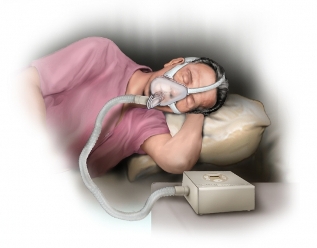Continuous positive airway pressure
Table of Contents
Table of Contents
Are you struggling to find relief with Continuous positive airway pressure (CPAP) therapy? Are you looking for alternatives? You’ve come to the right place.
Pain Points Associated with Continuous Positive Airway Pressure (CPAP) Therapy Alternatives
While CPAP therapy is an effective treatment for sleep apnea, not everyone can tolerate its use. Some patients experience discomfort, such as nasal dryness, congestion, and irritation, or feel claustrophobic wearing the mask. Others may find it difficult to fall asleep or experience insomnia as a result of the device’s noise or fit.
Solution: Alternative Treatments for Continuous Positive Airway Pressure (CPAP) Therapy
Fortunately, there are several alternative treatments available that can help manage sleep apnea symptoms and improve sleep quality. Some of these options include:
1. Oral Appliance Therapy
Oral appliance therapy is a highly effective treatment for sleep apnea and snoring. It involves using a small, custom-made device that is worn over the teeth like a mouthguard. This device helps to hold the jaw forward, which in turn opens up the patient’s airway. Some of the benefits of oral appliance therapy include its non-invasiveness, comfortable fit, and ease of use.
2. Surgery
In severe cases, surgery to remove excess tissue in the throat and nose area may be necessary. Surgery can help to increase the patient’s airway space and relieve symptoms such as snoring and sleep apnea.
3. Positional Therapy
Positional therapy involves wearing a special device that encourages the patient to sleep on their side. This position can help to improve breathing and reduce symptoms of sleep apnea.
4. Lifestyle Changes
Lifestyle changes can also help to reduce the severity of sleep apnea symptoms. These can include losing weight, avoiding alcohol and smoking, and getting regular exercise.
My Personal Experience with Oral Appliance Therapy for Continuous Positive Airway Pressure (CPAP) Therapy Alternatives
After experiencing discomfort and dry nose from CPAP therapy, I turned to oral appliance therapy as an alternative. The custom-fit device has been a game changer – it’s comfortable to wear, I no longer feel claustrophobic or have issues falling asleep. The best part is the ease of use, as the device is portable and doesn’t require a power source like CPAP machines.
Other Options to Consider for Continuous Positive Airway Pressure (CPAP) Therapy Alternatives
In addition to the aforementioned remedies, there are other options to address sleep apnea symptoms. These include:
1. Acupuncture
Acupuncture involves the insertion of thin needles into specific points of the body to relieve congestion and improve breathing. It can also aid in managing insomnia, which commonly co-occurs with sleep apnea.
2. Essential Oils
Essential oils such as peppermint, eucalyptus, and lavender can promote relaxation, relieve nasal congestion, and reduce inflammation in the airways. These can be used in a diffuser, or diluted and applied topically to the chest and neck.
Question and Answer
1. Can I use oral appliance therapy and CPAP therapy interchangeably?
Unfortunately, no. Using them together can cause air leaks and discomfort. However, combining oral appliances with positional therapy or lifestyle changes can help manage sleep apnea symptoms.
2. How long does it take to adjust to oral appliance therapy?
It varies for each person. Some may need a couple of weeks to adjust to the sensation of wearing the device, while others may take longer. If discomfort persists, seek advice from your healthcare provider.
3. How long should I sleep on my side using positional therapy?
Experts recommend sleeping on your side for at least seven hours per night to effectively manage sleep apnea symptoms.
4. Is surgery the only option for severe sleep apnea symptoms?
No. Surgery should only be considered as a last resort. Consult with your healthcare provider to determine if this is the best course of action for you.
Conclusion of Continuous Positive Airway Pressure (CPAP) Therapy Alternatives
If you’re struggling with CPAP therapy, know that there are alternatives available to manage sleep apnea symptoms. From oral appliance therapy to positional therapy and lifestyle changes, there are several ways to improve sleep quality. Talk to your healthcare provider to find the best option for you.
Gallery
Mechanism Of Action Of Continuous Positive Airway Pressure Therapy IV

Photo Credit by: bing.com / airway pressure positive continuous therapy iv
Continuous Positive Airway Pressure Therapy | Nursing Information

Photo Credit by: bing.com / pressure positive airway continuous education health nursing information therapy choose board
Continuous Positive Airway Pressure (CPAP) -Therapie

Photo Credit by: bing.com / cpap apnea airway nasal sleepers suffering bipap snoring therapie hable dificultades prism somsak eyeem using copd galeon fitnesslifestylehealthclub
Continuous Positive Airway Pressure | UVA Health

Photo Credit by: bing.com / pressure positive airway continuous cpap machine medical nucleus copyright inc sleep
Continuous Positive Airway Pressure (CPAP) Devices Market

Photo Credit by: bing.com / pressure positive airway continuous cpap devices types market machine breathing bipap different insights premium press release

